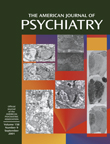To the Editor: Dr. Quitkin and colleagues suggest that the gender differences in response rates we reported are artifacts of a difference in dropout rates, and they use their own completer analysis to support this. Their point is well taken that if one performs only a completer analysis of rates of response to sertraline and imipramine treatment by gender, the differences are less strong. However, their reanalysis is based on incorrect data. The response rates for the completers were actually 69.5% (41 of 59) for the men taking imipramine, 55.3% (68 of 123) for the men taking sertraline, 56.0% (56 of 100) for the women taking imipramine, and 60.4% (137 of 227) for the women taking sertraline. (Not all dropouts were nonresponders.) Moreover, Dr. Quitkin et al. compare only three out of four response rates, which is an inappropriate analysis for a 2×2 factorial design. The appropriate analysis for this design is to test the two main effects and then the interaction between the two. If there is a significant interaction, then the comparisons of the main effects are not valid alone. For the completers, a test of interaction evaluating the pattern of response to the two drugs by men and women was statistically significant (Wald χ2=4.82, df=1, p=0.03), as reported in our article.
The reason for using an intent-to-treat analysis (with last observation carried forward) is that the patients who dropped out provided an important part of the clinical picture. Dropout rates are strongly related to nonresponse; more than 70% of those who dropped out of our study were not responding at the time. To focus only on those who completed the study excludes a substantial number of patients from the analyses. Moreover, since the men and women dropped out of the two treatment arms at different rates, the balance in baseline characteristics (measured or otherwise) provided by randomization was lost in the completer analysis. Thus, although the results of completer analyses are of descriptive interest, they must be viewed with considerable caution because they can lead to biased conclusions.
We agree that there may also be interpretive problems with an intent-to-treat analysis in the face of differential dropout rates (although to a lesser extent than with the use of completer analysis). Therefore, we included a survival analysis, which adjusts for the differences in dropout rates. This analysis uses the data available for each subject up until the time of dropout, at which point the data for that subject are censored from the analysis. This method also demonstrated a significant interaction (Cox proportional hazards regression model, χ2=7.56, df=1, p=0.006); similar data patterns were obtained. Thus, all three analyses—intent to treat, completer, and survival—demonstrate a significant interaction of gender and treatment, which underscores the strength of our findings.
Dr. Quitkin et al. note that other studies have not shown differences in response rates between SSRIs and tricyclic antidepressants in depressed men, although no references are given. They also raise the possibility that our findings were due to a type I error. To our knowledge, this is the first large published study to compare rates of response to SSRIs and tricyclic antidepressants by gender. As men typically constitute a minority of the participants in studies of depression, it is conceivable that earlier studies may not have had adequate power to detect such modest, albeit important, differences. Although few researchers have examined sex differences in response rates, the results of several studies have supported our findings
(1–
3; unpublished report by Yonkers et al., 1996; unpublished report by Baca et al., 2000). Such consistencies across studies mitigate the likelihood of a coincidental finding or a type I error.
We believe that the possibility of differential treatment response rates by gender warrants serious investigation. One of the major points of our article was the importance of analyzing data by both gender and menopausal status, and not assuming there are no differences in response or tolerability that are related to these factors.

